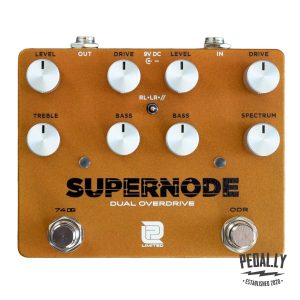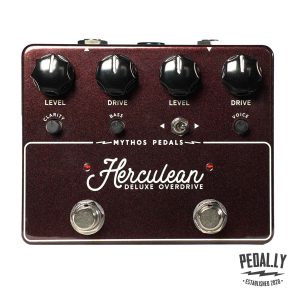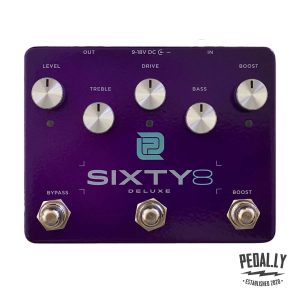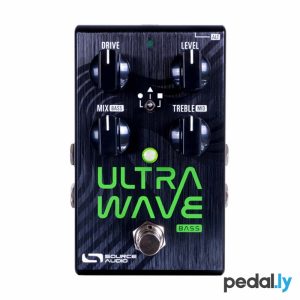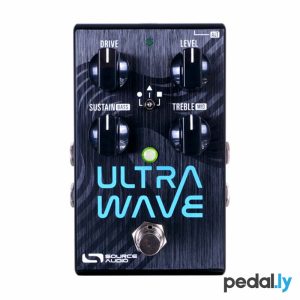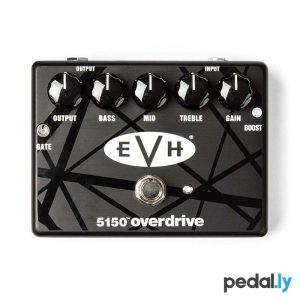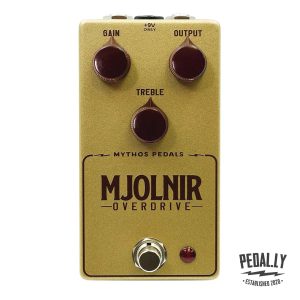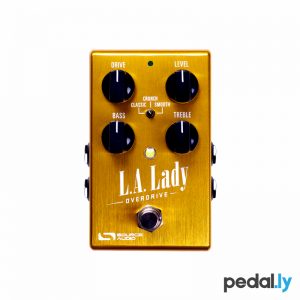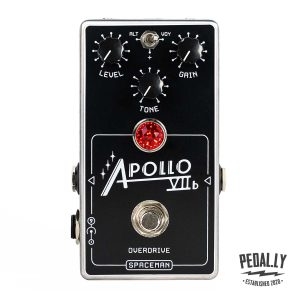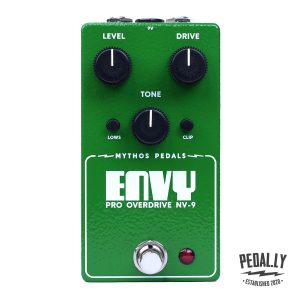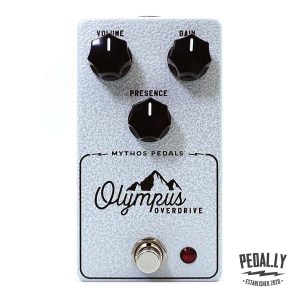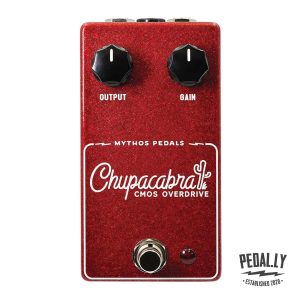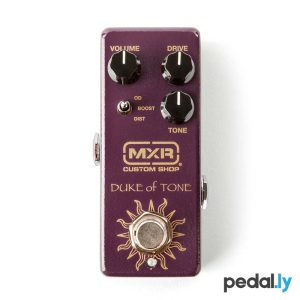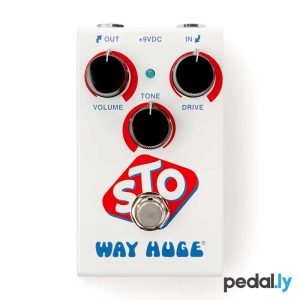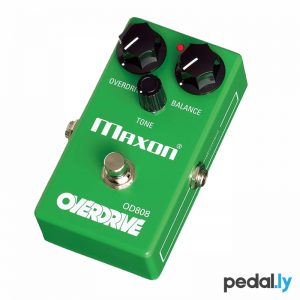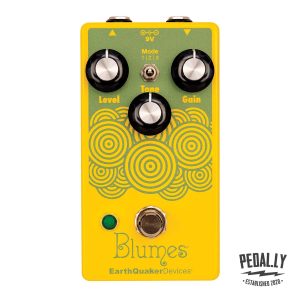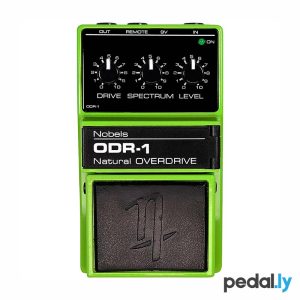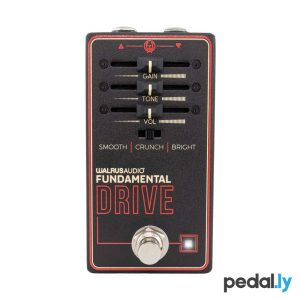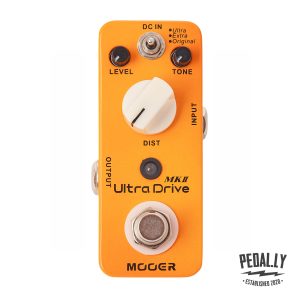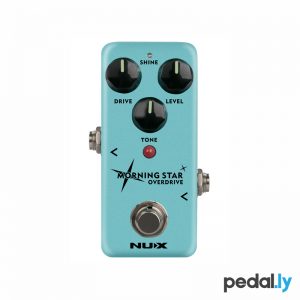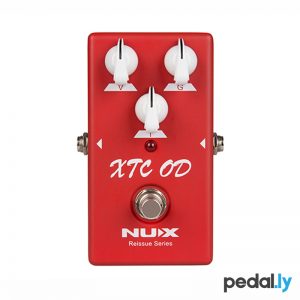Overdrive Pedals
OVERDRIVE Pedals
-
LPD Eighty7 Deluxe Dual Overdrive Pedal
$330.00 Add to cart -
LPD Supernode Dual Overdrive Pedal
$299.99 Add to cart -
Westminster Effects 2716 Seth Morrison Deluxe Distortion Pedal
$299.99 Add to cart -
LPD Seventy4 Deluxe Overdrive Preamp Pedal
$299.99 Add to cart -
Mythos Herculean Deluxe Dual Overdrive Pedal
$299.00 Add to cart -
LPD Sixty8 Deluxe Plexi Overdrive Pedal
$290.00 Add to cart -
Source Audio Ultrawave Multiband Bass Processor Pedal
$249.00 Add to cart -
Source Audio Ultrawave Multiband Processor Pedal
$249.00 Add to cart -
LPD Seventy4 Overdrive Preamp Pedal
$210.00 Add to cart -
MXR EVH 5150 Overdrive Pedal (EVH5150)
$209.99 Add to cart -
LPD Fifty5 Overdrive V1 Pedal
$199.99 Add to cart -
Spaceman Polaris Cadet: Resonant Overdrive Pedal
$199.00 Add to cart -
Mythos Mjolnir Overdrive Pedal
$199.00 Add to cart -
Source Audio L.A. Lady Overdrive Pedal
$199.00 Add to cart -
Spaceman Apollo VIIb Cadet: Preamp / Overdrive Pedal
$179.00 Add to cart -
Mythos Envy Pro Overdrive Pedal
$179.00 Add to cart -
Mythos Olympus Overdrive Pedal
$179.00 Add to cart -
Mythos Chupacabra CMOS Overdrive Pedal
$179.00 Add to cart -
MXR Duke of Tone Overdrive Pedal (CSP039)
$159.99 Add to cart -
MXR Timmy Overdrive Pedal (CSP027)
$159.99 Add to cart -
Spaceman Saturn VI Cadet: Harmonic Booster Pedal
$159.00 Add to cart -
Maxon OD-9 Overdrive Pedal
$159.00 Add to cart -
Westminster Effects Piper Drive V3 Overdrive Pedal
$149.99 Add to cart -
Way Huge Smalls STO Overdrive Pedal
$149.99 Add to cart -
Westminster Effects 1689 Overdrive V2 Pedal
$149.99 Add to cart -
Nobels ODR-1X Overdrive Pedal
$149.00 Add to cart -
Maxon OD808 Overdrive Pedal
$149.00 Add to cart -
EarthQuaker Devices Blumes Low Signal Shredder Pedal
$119.00 Add to cart -
Nobels ODR-1 (BC) Overdrive Pedal
$119.00 Add to cart -
Pigtronix Gamma Drive Overdrive with 2-Band EQ Pedal
$129.00Original price was: $129.00.$109.00Current price is: $109.00. Add to cart -
Walrus Audio Fundamental Series Drive Pedal
$99.99 Add to cart -
Electro-Harmonix Soul Food Distortion/Overdrive Pedal
$89.00 Add to cart -
Mooer Ultra Drive MKⅡ Overdrive Pedal
$88.00 Add to cart -
NUX mini core NOD-3 Morning Star Overdrive Pedal
$54.00 Add to cart -
Joyo Baatsin Pure Analog Overdrive and Distortion Pedal
$64.99Original price was: $64.99.$44.99Current price is: $44.99. Add to cart -
Joyo Tauren High Gain Overdrive Pedal
$54.99Original price was: $54.99.$34.99Current price is: $34.99. Add to cart -
NUX Steel Singer Drive Pedal
$49.00Original price was: $49.00.$29.00Current price is: $29.00. Add to cart -
NUX XTC OD, Reissue Series Overdrive Pedal
$49.00Original price was: $49.00.$29.00Current price is: $29.00. Add to cart
Why use an overdrive pedal?
A guitarist will use an overdrive pedal to add warmth, grit, and harmonic complexity to their guitar tone.
Overdrive pedals simulate the sound of an overdriven amplifier, creating a distinct tonal character that can be used to enhance the natural sound of a guitar.
Overdrive can be used for a wide range of styles, from blues and rock to metal and alternative, and can provide a guitarist with greater tonal versatility, allowing them to easily switch between clean and distorted sounds. Additionally, overdrive pedals can be used to push an amplifier into natural overdrive, further increasing the gain and saturation of the guitar signal.
If a clean boost of your guitar signal is more your style, check out our boost pedals. We also have fuzz pedals for players who really want to crank up the noise!
Which Overdrive Pedal is best for me?
Choosing the best overdrive pedal for guitar depends on several factors, including your playing style, the type of guitar and amplifier you use, and your desired tone. Here are some things to consider when choosing an overdrive pedal:
Your playing style: Different overdrive pedals work better for different playing styles. For example, if you play blues or classic rock, you may want an overdrive pedal with warm, smooth tones. If you play heavy metal or hard rock, you may prefer a pedal with a more aggressive and distorted sound.
Type of guitar and amplifier: The type of guitar and amplifier you use will also affect the sound of your overdrive pedal. For example, single-coil pickups tend to sound brighter and more trebly, while humbuckers tend to sound thicker and more bass-heavy. Likewise, certain amplifiers may work better with certain types of overdrive pedals.
Sound quality: Look for an overdrive pedal that produces high-quality sound with minimal noise or unwanted artifacts. This will ensure that your tone remains clear and consistent, even at high gain levels.
Controls: Overdrive pedals typically have controls for adjusting the amount of gain, volume, and tone. Look for a pedal with intuitive and responsive controls that allow you to fine-tune your tone to your liking.
Additional features: Some overdrive pedals have additional features, such as built-in EQ or boost functions. Consider whether these features are important to you and whether they will add value to your playing.
Price: Overdrive pedals are available at a range of prices, from budget options to high-end models. Consider your budget and choose a pedal that offers the features and sound quality you need at a price point that works for you.
The best way to choose an overdrive pedal is to review the playing demos of our different models and see which one sounds and feels best for your playing style. Often times you will see players with several overdrive pedals on their pedalboard because each pedal brings something special to your guitar tone.


